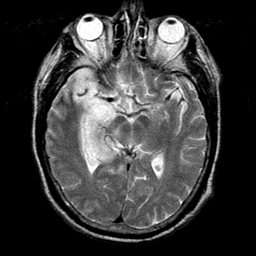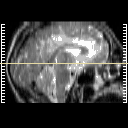| Tour 1: Next/Previous/Start:
At this slightly higher level, you can see the most inflamed
portion of the temporal lobe, involving the uncus and
adjacent
parahippocampal gyrus,
in brightest white on MR and on perfusion SPECT.
This target of HSV
encephalitis can become so swollen that it causes midbrain
compression, one of the reasons that HSV is the most common
cause of fatal encephalitis in humans.
When this patient became ill, he experienced the
sensation of odd
smells, particularly of burning rubber or of hot metal.
The uncus and
surrounding temporal lobe structures mediate the sense of
smell, and, as
Hughlings Jackson described in 1890, these structures can
produce such symptoms when irritated. (Jackson JH and
Beevor CE. Brain 12:346-57).
|
|



